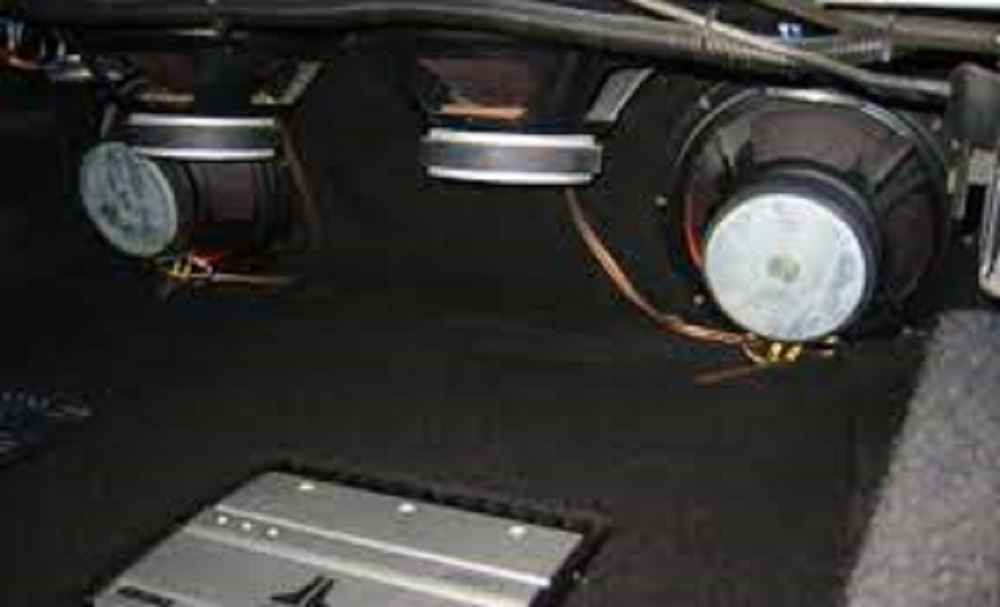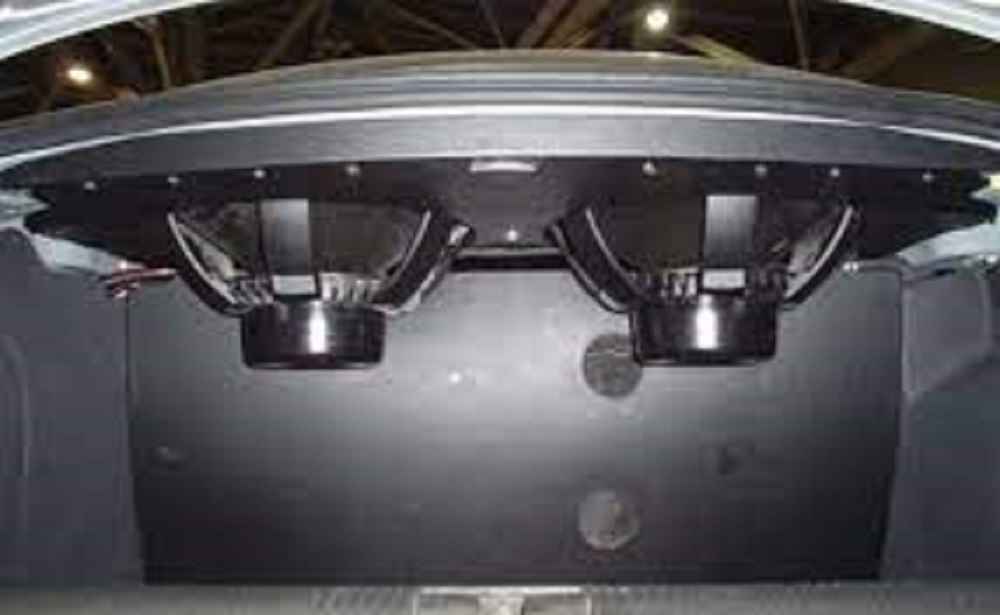You have possibly heard about a free air subwoofer but don’t know what it is. In this article, we will define what a free air subwoofer is for you and how it works.
We will also walk you through the advantages and disadvantages of using a free air subwoofer. By the end of this article, you’ll have all the information you need about free air subwoofers.

What is a free air subwoofer?
A free air subwoofer is a type of subwoofer that does not require an enclosure to operate.
Unlike sealed or vented subwoofers, a free air subwoofer uses the car’s trunk as its enclosure. This design allows for more flexible installation options and saves valuable trunk space.
The technology behind free air subwoofers is similar to that of other subwoofers, but they have distinct characteristics that set them apart.
For example, free air subwoofers typically have lower power handling capacity compared to sealed or vented subwoofers, but they are more efficient in utilizing the available air space in the car’s trunk.
How does a free air subwoofer work?
The functioning of a free air subwoofer is based on the difference between sealed and vented subwoofers. Sealed subwoofers are airtight, while vented subwoofers allow air to move in and out of the enclosure to control the pressure inside.
Free air subwoofers operate by using the air space in the car’s trunk as its enclosure. The speaker is mounted on the rear deck or a subwoofer baffle, and the air space in the trunk acts as a pressure chamber to enhance the speaker’s performance.
The working mechanism of a free air subwoofer involves the movement of air to create sound waves that produce powerful, deep bass.
The air space and volume in the trunk are crucial to the functioning of a free air subwoofer. Without sufficient air space and volume, the subwoofer’s performance may be compromised, and the sound quality will suffer.

Advantages of using a free air subwoofer
Free air subwoofers offer several advantages that make them a popular choice for car audio enthusiasts.
One of the biggest advantages is cost effectiveness. Free air subwoofers do not require an enclosure, which can be expensive. This makes them a more affordable option for those who want to upgrade their car audio system.
Another advantage of free air subwoofers is space savings. By using the car’s trunk as its enclosure, a free air subwoofer does not take up any valuable space in your car trunk.
This makes a free air subwoofer an option for car owners who need to utilize their car trunk for storage.
Finally, free air subwoofers offer improved audio performance compared to other types of subwoofers. The air space in the trunk enhances the performance of the speaker, providing deep, powerful bass that enhances the overall listening experience.
Disadvantages of using a free air subwoofer
Despite their many advantages, free air subwoofers also have some disadvantages that should be taken into consideration.
One of the biggest disadvantages is that a free air subwoofer requires a compatible car audio system. Not all vehicles are suitable for free air subwoofers, and it’s important to ensure that your car audio system is compatible before purchasing a free air subwoofer.
Another disadvantage of free air subwoofers is that they may have limitations in power handling compared to sealed or vented subwoofers. This means that they may not be suitable for high-powered car audio systems.
Finally, proper installation and tuning are crucial to getting the best performance from a free air subwoofer.
Improper installation can lead to poor sound quality, and it’s important to have a professional install and tune your subwoofer for optimal performance.
How to choose the right free air subwoofer
Choosing the right free air subwoofer for your car audio system is very important. To choose the right sub, you need to consider factors like the compatibility with your car audio system, the power handling capacity of the sub, the sub size, and the available mounting options.
Compatibility with your car audio system
It’s important to ensure that your car audio system is compatible with a free air subwoofer before purchasing one. This will help you avoid any potential issues with installation and performance.
Power handling capacity
When choosing a free air subwoofer, it’s also important to consider its power handling capacity. A subwoofer with higher power handling capacity will be able to handle more power, resulting in improved performance.
Size of the sub
You have to consider the available space in your car to accommodate the sub. You won’t like to cramp a large sub in a small space in your car trunk.
Therefore, always consider the available space in your trunk and choose a sub with the right size to fit in. Choose the right size of sub for your car’s trunk.
Mounting option
Ensure that the sub you are purchasing has mounting options that are compatible with your car audio system.

Conclusion
Free air subwoofers are a unique type of subwoofer that offer several advantages over other types of subwoofers, including cost effectiveness, space savings, and improved audio performance.
However, it’s important to consider the disadvantages of free air subwoofers, including compatibility with your car audio system, limitations in power handling, and the need for proper installation and tuning.
When choosing a free air subwoofer, consider factors such as compatibility with your car audio system, power handling capacity, speaker size and mounting options, and professional installation.
With the right free air subwoofer and a properly installed and tuned car audio system, you’ll be able to enjoy deep, powerful bass that enhances your overall listening experience.
What is the difference between a free air subwoofer and a sealed or vented subwoofer?
A sealed subwoofer uses a sealed enclosure to produce bass, while a vented subwoofer uses a vented or ported enclosure. A free air subwoofer uses the vehicle’s trunk as its enclosure.
The main difference between a free air subwoofer and a sealed or vented subwoofer is that a free air subwoofer does not require an additional enclosure, making it more cost-effective and space-saving.
How do I determine if my car audio system is compatible with a free air subwoofer?
You can determine if your car audio system is compatible with a free air subwoofer by checking the specifications of your car audio system and comparing them to the specifications of the free air subwoofer you are interested in purchasing.
It’s also important to consider the size of your car’s trunk, as the free air subwoofer must be able to fit in the trunk space.
Can I install a free air subwoofer myself, or do I need a professional?
While it is possible to install a free air subwoofer yourself, it is highly recommended that you have a professional install it for you. Improper installation can lead to poor sound quality and even damage to your car audio system.
A professional will have the expertise and equipment to install and tune your subwoofer for optimal performance.
What is the difference between a 10 inch and a 12 inch free air subwoofer?
The main difference between a 10 inch and a 12 inch free air subwoofer is the size of the speaker.
A larger speaker will generally produce more bass than a smaller speaker, but the size of the speaker also affects the power handling capacity and frequency response of the subwoofer.
It’s important to choose the right size speaker for your car audio system based on your preferences and the specifications of your car audio system.
What happens if I install a free air subwoofer in a car that is not compatible with this type of subwoofer?
If you install a free air subwoofer in a car that is not compatible with this type of subwoofer, you may experience poor sound quality, damage to your car audio system, or even damage to your vehicle.
It’s important to ensure that your car audio system is compatible with a free air subwoofer before purchasing and installing one to avoid any potential issues.
